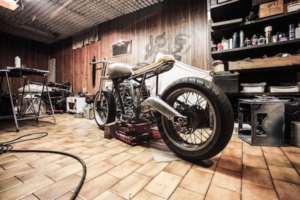What You Need to Know Before Adding Heating or Cooling to Your Garage
For the most part, the garage is reserved for housing the family vehicle, storing boxes of possessions, and keeping lawn and garden tools out of the elements. If that’s the case, then the garage really doesn’t need to be heated. It’s becoming more and more popular to convert the garage into a workshop or even an additional living space, whether it’s a hangout spot for the kids, or a den for the whole family to enjoy. If that’s the case, then providing heating and cooling for the garage is a good idea.
The problem is, it’s illegal to simply connect your garage up to the main HVAC unit for the home, in addition to being extremely dangerous.
Let’s say, for the sake of argument, that you have a 3-ton HVAC set up in your home and have an outtake vent in the garage connected to it. A 3-ton system will take in 1200 cubic feet of air per minute (cfm), and shoots back out 1200cfm into the conditioned area. A central HVAC that includes the garage will put perhaps 400cfm into the garage, and maybe 800cfm into the house itself. This system will then still take in 1200cfm from the main house, despite only putting out 800cfm there.
The thing about having proper air flow is that the cfm for the intake and outtake have to be the same. So, if the HVAC is only pumping 800cfm back into the house, it has to get the extra 400cfm from somewhere…such as the garage, inside the walls, or maybe from the flue on your gas water heater.
All of these possibilities can make you sick. Since the garage is where vehicles, paints, solvents, gasoline and other harmful chemicals are usually stored, you wouldn’t want to be pulling that air into your home. And if the air is being pulled from the flue, you risk pumping carbon monoxide into your home if the heater happens to be running at the same time that air is being pulled down the flue.
So, you really have two options: either make your garage a permanent part of your main living space through renovation, or heat and cool your garage using its own unit such as a heat pump for garage.
Since the first option involves a far bigger cost, let’s assume that you are going to go with an individual unit. There are two basic types: the combination unit and the portable unit.
Combination Heating & Cooling Units
As you might guess from the name, the combination unit provides both heating and cooling in one convenient package. Under the “combination unit” category, there are two types of heating and cooling systems: the Ductless Mini-Split and the Window unit.
Ductless Mini-Split: A ductless mini split is a heat pump for your garage. This type offers all the benefits of central heating and air conditioning, but in a much more contained size. The downside of going with a Ductless Mini-Split unit is that it is more expensive and it requires enough space to accommodate the outdoor part of the unit.
Window: The window unit (assuming there are windows in your garage) is much more compact than a Ductless Mini-Split, it doesn’t require as heavy an investment and you don’t have to put a hole in the wall to pull air into the outdoor unit. The downside is that they tend to look kind of messy, and they can be a bit noisy.
Portable Units: Portable units only provide one function: heating or cooling. If you have a smaller budget, or you live somewhere that allows you to only need heating or cooling, portable units are a great option. While they are not necessarily energy-efficient, they are easy to use: simply plug them in, set the controls and walk away.
Portable A/C: Portable A/Cs are generally priced between $500-$800, and do not require any installation. They are designed to condition the air in single areas of up to 20’ x 25’. While they aren’t as efficient as a mini-split, they are still pretty effective. The big downside is that they need to have an exhaust pipe that vents outdoors.
Electric Space Heaters: There are a number of different styles of portable electric space heaters, such as radiant, forced air and infrared heaters. Because these do not have an open flame, they are pretty safe and don’t require ventilation.
Gas Heaters: Gas heaters are capable of heating a space quickly, but they need to be in a well-ventilated area, or they should have their own vent to the outdoors. All gas heaters produce harmful fumes. There are three different kinds of gas heaters: propane, natural gas and kerosene.
Wood or Pellet Heater: These are stoves that use wood or another combustible material to heat a space. Traditional wood-burning stoves are still widely available, are affordable and simple to use. They are great for heating spaces that are open. That said, they require a fair amount of space and a chimney to vent outside and their surroundings need to be fire-proof.
Whichever method you choose to heat and cool your garage, you need to make sure that it is self-contained rather than shared with the main living area, and that it is appropriate to your needs and budget. If you’re looking to add a heating or cooling option to your garage, like a heat pump, contact us for a free consultation. From Victoria to Duncan BC HVAC services.
Easy Financing with…
Start Saving Money NOW! There’s no need to putting off a more Energy Efficient, Cost Effective home comfort system. We make it simple!
With Financeit you can:
- Make additional payments any time without penalty.
- Get a lower payment by choosing an amortization period of up to 180 months. 7.99% to 11.99% interest rate.*
- We add a small fee to the loan amount. There are no hidden or additional charges
- Bank-level encryption (AES-256 bit SSL) to protect your personal information.




